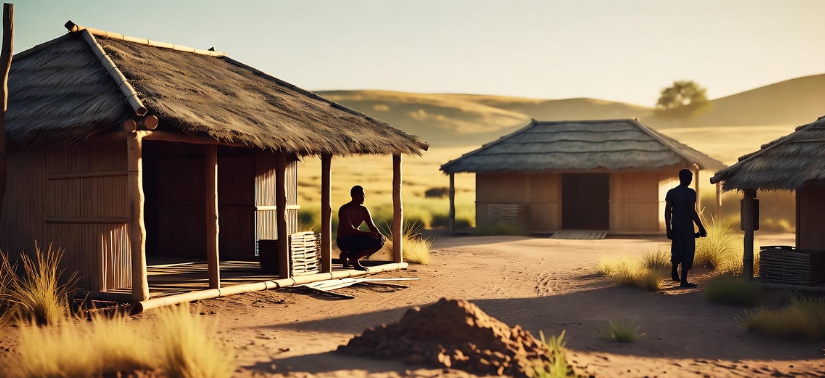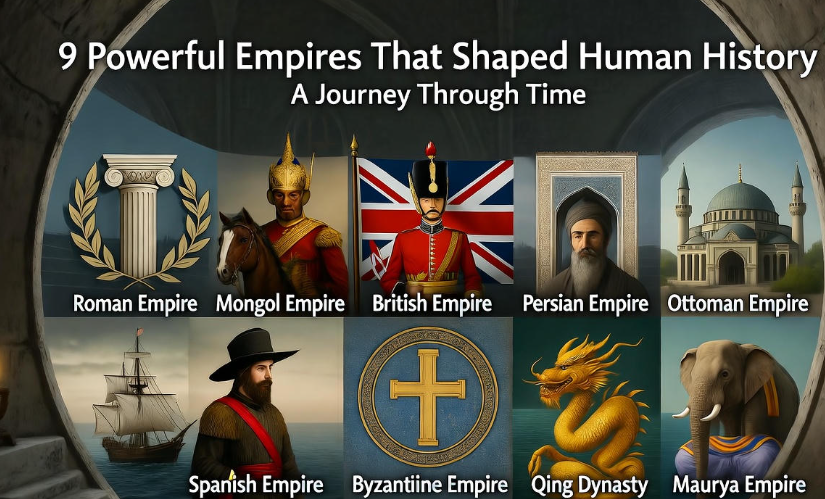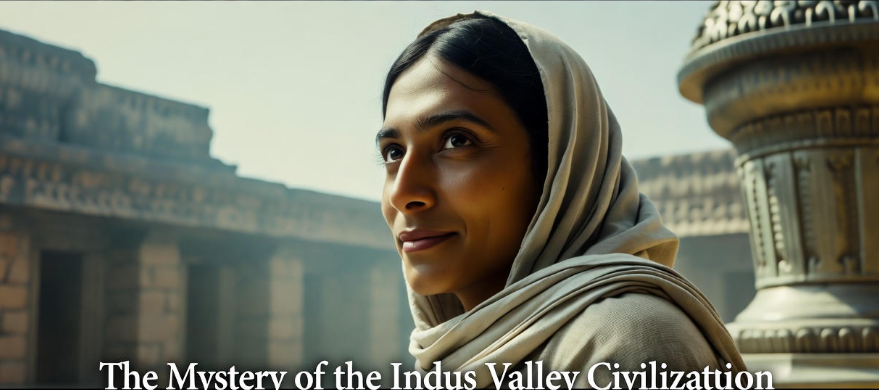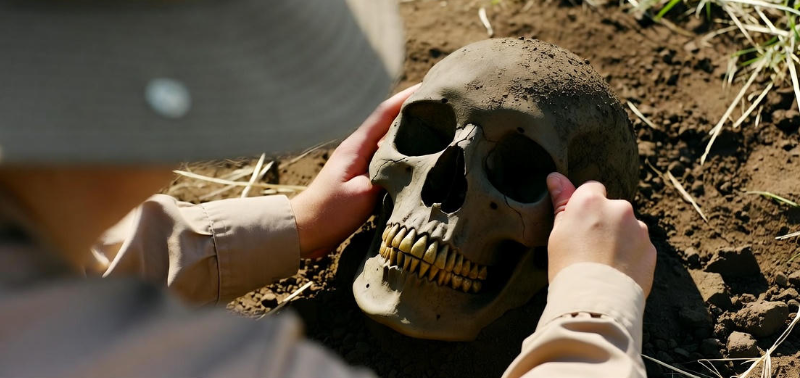When we look around at modern cities—tall buildings, busy roads, lights everywhere—it’s easy to forget that it all started with something much simpler. Thousands of years ago, early humans were just learning how to live together in one place. But step by step, they laid the foundation for everything we now call civilization.
The First Step: Settling Down from Nomadic Life
In the very beginning, humans were wanderers. They hunted animals and gathered fruits wherever they could find them. Life was tough and uncertain. But then came one of the biggest changes in human history—the Agricultural Revolution 🌾.
Around 10,000 years ago, people discovered how to grow crops and domesticate animals. This changed everything. They no longer needed to move constantly in search of food. They started settling near fertile lands and rivers—places where crops could grow easily and water was available all year round.
Once they stopped moving, permanent settlements began to appear. These small farming villages were the seeds from which cities would eventually grow.
| Key Factor | How It Helped Form Cities |
|---|---|
| Agriculture | Provided stable food sources |
| Domestication of animals | Helped in farming, transport, and trade |
| Permanent homes | Encouraged cooperation and security |
| Water sources | Enabled irrigation and population growth |
How Villages Turned into Towns and Then Cities 🏡➡🏙️
As farming became more successful, food production increased. With more food, populations grew. And with more people, villages started to expand. People began to specialize in different kinds of work. Some became farmers, others potters, weavers, or metal workers.
This specialization led to trade. Farmers would exchange crops for tools or pottery. This need for exchange created marketplaces, and marketplaces became the heart of growing towns.
Soon, these towns needed leaders, laws, and organization. People began building walls to protect themselves and temples to worship their gods. The moment humans started building these structures, true urban life began.
The Role of Rivers in Early City Development 🌊
Almost every early city in history began near a river. And that wasn’t a coincidence. Rivers gave people water to drink, water for farming, and routes for trade.
Let’s take a look at some examples:
| Ancient Civilization | Major River | Famous City | Approx. Time Period |
|---|---|---|---|
| Mesopotamia | Tigris & Euphrates | Uruk, Ur | 4000–3000 BCE |
| Egypt | Nile | Thebes, Memphis | 3100 BCE |
| Indus Valley | Indus | Mohenjo-Daro, Harappa | 2500 BCE |
| China | Yellow River | Anyang | 1600 BCE |
These river valleys were cradles of civilization, places where agriculture, trade, and community life flourished.
Uruk: The World’s First Real City 🧱
One of the first true cities was Uruk, located in ancient Mesopotamia (modern Iraq). Around 4000 BCE, Uruk had thousands of people, temples, walls, and organized streets. It was like the New York City of the ancient world!
Uruk was special for several reasons:
-
It had a complex government that organized construction and trade.
-
The people of Uruk developed writing (cuneiform) to keep records.
-
Large temples called ziggurats were built for religious purposes.
The development of writing was especially important. It allowed leaders to keep track of trade, taxes, and laws—something essential for any city to function smoothly.
The Role of Religion and Temples in Early Cities ⛪
In many early societies, religion was the glue that held people together. The temple wasn’t just a place of worship; it was also a center for economy, storage, and administration. Priests kept track of stored grain, led ceremonies, and sometimes even acted as early government officials.
People believed their gods protected the city, so building a temple wasn’t just religious—it was a symbol of power and unity.
The Rise of Trade and Craftsmanship 💰
As cities grew, people began producing more goods than they needed. This extra production encouraged long-distance trade. Early humans traded not only food and tools but also luxury goods like gold, copper, and lapis lazuli.
Cities became hubs of economic activity. Artisans crafted jewelry, weapons, and pottery. Traders connected cities from Mesopotamia to the Indus Valley. This web of exchange made cities wealthy and influential.
| Traded Item | Origin | Traded To | Purpose |
|---|---|---|---|
| Lapis lazuli | Afghanistan | Mesopotamia | Jewelry and decoration |
| Copper | Oman | Indus Valley | Tools and weapons |
| Grains | Egypt | Near East | Food exchange |
The Beginning of City Planning 🏗️
Early humans didn’t just build randomly. Archaeological discoveries show that many ancient cities were carefully planned.
For example:
-
Mohenjo-Daro in the Indus Valley had grid-pattern streets, public baths, and even drainage systems—over 4,000 years ago!
-
Babylon had massive walls, ziggurats, and palaces organized around the city center.
This shows how people were learning to design efficient living spaces for large populations. The idea of “urban planning” was already alive thousands of years before modern architects existed.
The Importance of Walls and Defense 🛡️
With wealth came danger. As some cities grew rich, others wanted to invade them. So, early cities began building walls—not just for protection but also as a symbol of strength.
Uruk, for example, was said to have a wall six miles long built by King Gilgamesh. Walls gave people a sense of safety and belonging. It was the birth of the concept of city identity.
The Social Structure of Early Cities 👑
Cities needed order, and that meant hierarchy. Early urban societies developed social classes:
| Class | Description |
|---|---|
| Rulers and Priests | Controlled government and religion |
| Merchants and Artisans | Created goods and handled trade |
| Farmers | Produced food for everyone |
| Slaves | Worked for the elite and on big projects |
This organization helped cities function smoothly—but it also created inequality, something that still exists in cities today.
Knowledge, Writing, and Education 📜
To manage taxes, trade, and laws, people had to record information. So, early humans invented writing systems.
-
Cuneiform in Mesopotamia
-
Hieroglyphs in Egypt
-
Indus script in South Asia
-
Oracle bone script in China
These early forms of writing made it possible to record history, plan agriculture, and manage citizens. Schools were often attached to temples, where young scribes learned the art of writing—making them some of the first educated citizens in history.
-
🔎 Discover more: Amazing Discoveries That Changed Human Evolution Forever
Why Cities Were So Revolutionary 🚀
Cities completely changed the way humans lived:
-
They encouraged innovation and creativity.
-
They brought together diverse groups of people.
-
They gave rise to governments, art, and science.
In a way, cities were the engines of progress that pushed humanity forward. Without them, there would be no civilizations, no empires, and no modern world as we know it.
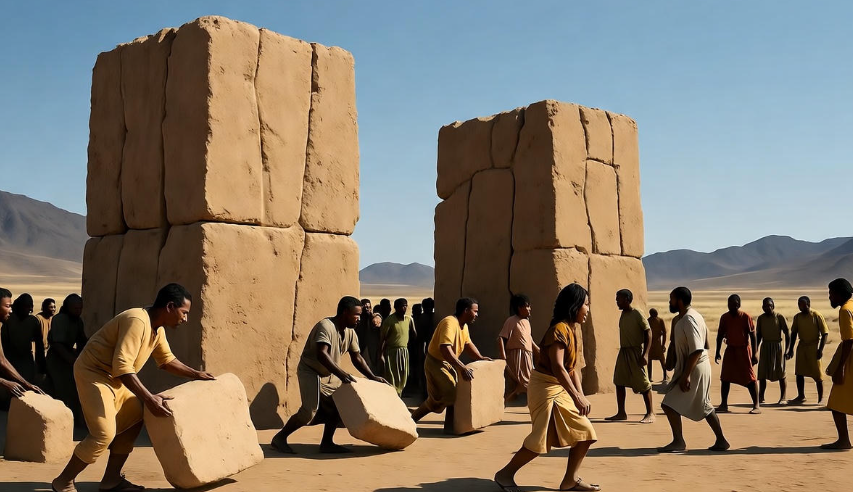
Challenges Early Cities Faced 🌋
Building cities wasn’t all easy. Early humans had to face many challenges:
-
Floods and droughts that destroyed crops.
-
Diseases spreading in crowded areas.
-
Conflicts between rulers or neighboring cities.
-
Limited resources, forcing people to trade or fight for survival.
Despite these struggles, cities survived—and adapted. When one city fell, another often rose from its ashes, stronger and more organized.
What We Can Learn from Early Cities 🧠
Modern urban planners still study how ancient cities were built. Why? Because early humans understood balance. They built cities near resources but respected nature. They created systems for clean water and waste, long before technology existed.
Their story reminds us that cities are not just about buildings—they’re about community, cooperation, and shared dreams.
Fun Facts About Ancient Cities 🤓
-
The first “skyscrapers” were ziggurats—temple towers in Mesopotamia.
-
The Indus Valley cities had flush toilets thousands of years before Europe did!
-
Some ancient cities used baked bricks, while others used mud and straw.
-
Ancient roads were designed for carts and animals, not cars, but the planning logic was similar.
Conclusion 🌍
The story of how early humans built the first cities is really the story of human progress. It started with simple shelters and ended with structured societies. People learned to work together, share resources, and dream big.
From Uruk’s temples to Mohenjo-Daro’s streets, early humans showed what cooperation and creativity can achieve. Our modern cities—with their technology, art, and culture—are the descendants of those early efforts.
When we walk through any city today, we’re walking on the echoes of ancient footsteps—the same dream of living together, building something greater, and leaving a mark on history. 🌆
FAQs ❓
Q1: What was the first city ever built?
The city of Uruk in Mesopotamia is considered the first true city, founded around 4000 BCE.
Q2: Why did early humans build cities near rivers?
Because rivers provided water, fertile soil, and easy transportation, making them ideal for agriculture and trade.
Q3: How did writing help cities grow?
Writing allowed people to record trade, taxes, and laws, helping them manage large populations and complex societies.
Q4: What were the main features of ancient cities?
They often had walls, temples, markets, houses, and organized streets—plus systems for water and waste.
Q5: Which early civilizations built famous cities?
The Mesopotamians, Egyptians, Indus Valley people, and Chinese all built advanced early cities that became the roots of modern urban life.

